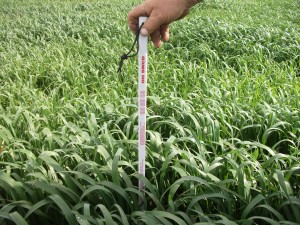– Mark Sulc, OSU Extension Forage Specialist

Valuing a standing forage crop can be a challenge, especially when a variety of ‘cover crop’ species could be on the market this fall.
How to value a standing hay crop is challenging. Assigning an appropriate value includes the buyer and seller agreeing on the market value for the hay and then adjusting for harvest costs and other factors that contribute to the price of hay sold in the open market, some of which are challenging to quantify.
A new factsheet and Excel worksheet are available to help you arrive at a fair price. These resources consider just a single crop of forage that is ready to harvest as hay or haylage. The grower’s base price equals the price they could receive for the crop from the hay market less harvesting/storage/marketing costs. Hopefully, this covers production costs and generates a profit. During price negotiations, it must be recognized that harvest risk is being shifted from the grower to the buyer, which should be applied as a further discount against the price paid by the buyer. Determining the market price of the harvested forage type that is growing in the field is perhaps the hardest part of the process. The adjustments to that price are a little more straightforward.
For full details, go directly to them using the following urls:
Factsheet with full explanation: http://go.osu.edu/standinghayprice
Worksheet Tool: http://go.osu.edu/standinghayprice-tool